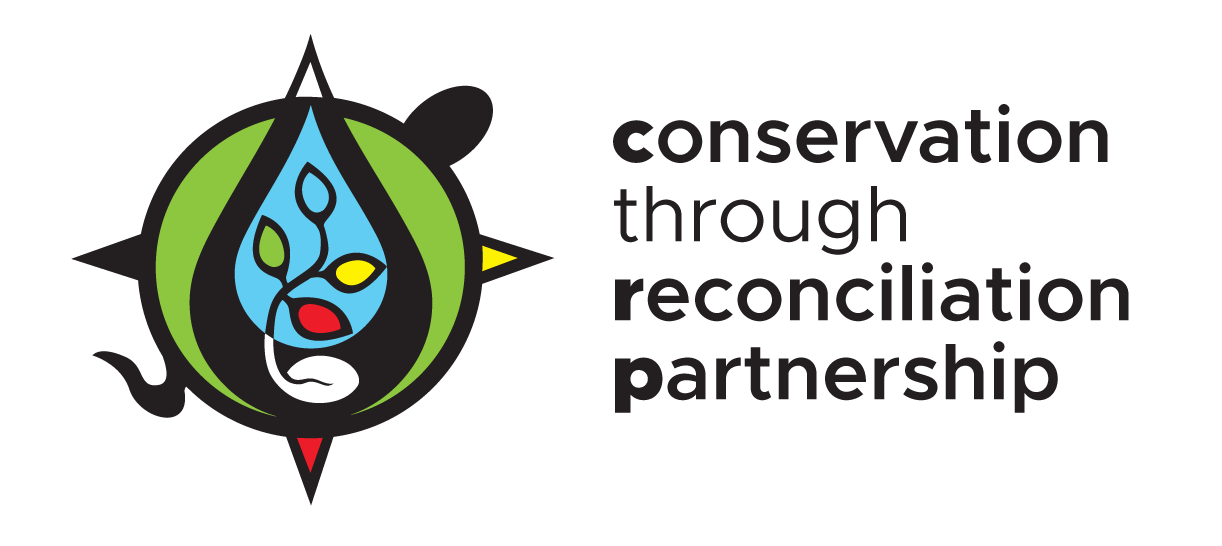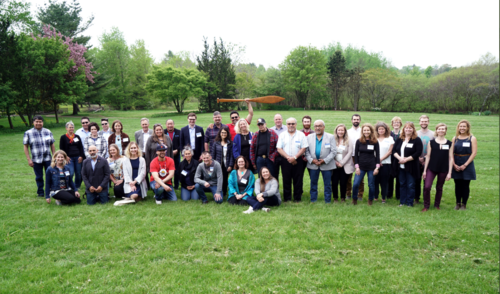Lighting a ‘good fire’: Indigenous fire knowledge and reconciliation in protected areas
By Colin R. Sutherland
In Canada, many land managers are scrambling to address the negative impacts of over a century of wildland fire suppression, an approach to fire management that aims to limit the amount of fire on the landscape. This approach has interrupted natural fire cycles and has led to an increase in flammable forest fuels, the loss of fire-adapted ecosystems, and the allowance of urban expansion into fire-prone environments.
Read More
Together, We Rise! 2020 Year in Review
The Conservation through Reconciliation Partnership (CRP) blog, Together, We Rise! is a space for partners and affiliates to share knowledge, research, and reflections about Indigenous-led conservation and CRP activities. The blog aims to inspire, inform, and connect people and organizations, and to support the CRP’s goal to transform the conservation sector in Canada.
Read More
Film preview of Water Wonders: Learning about water, culture, colonialism and connections
By Kristy Franks
The Water Wonders project is a way to connect the research process with real world experiences and aims to benefit those involved. I am honoured to have been working with the Cree Nation of Wemindji since 2014, and with partners from Adnyamathanha, Kaurna, and Ngarrindjeri communities in Australia since 2018. I strive for the work to be applicable, relevant, and reciprocal. I squirm at the idea of my doctoral work remaining limited to exclusive interviews and academic articles (although yes the articles will happen too!).
Read More
Rights-based approaches in the post-2020 Global Biodiversity Framework
By Ghanimat Azhdari
It is with deep sadness and respect for our friend and colleague Ghanimat Azhdari that we publish this blog post she was working on before she died earlier this year. This month we remember her contributions at the CBD meetings held a year ago in Montreal, Canada and continue to honour her legacy.
Read More
To Wood Buffalo National Park, with love: Reflections from the authors
By Chloe Dragon Smith and Robert Grandjambe
We wrote this story because we have been feeling the frustrations of our experiences in the Park, where we have been based since the Covid19 pandemic hit hard in March. I have had the privilege of being involved in the Pathway to Canada Target 1 as a member of the National Advisory Panel, a federal initiative to support the creation of more protected areas in Canada.
Read More
The Constitution is Under Attack
A joint statement from the CRP Leadership Circle
Indigenous and non-Indigenous Canadians alike have watched the conflict over inherent and treaty fishing rights to lobster on the East Coast in disappointment and deep concern. It is hard to believe, more than five years after the Truth and Reconciliation Commission was concluded and the federal government committed to meeting all 94 calls to action, that we see yet another conflict over Indigenous harvesting rights in their traditional territories. There are persistent misunderstandings about our collective responsibilities to uphold aboriginal rights enshrined in the Canadian constitution and in UNDRIP.
Read More
Embodying Ethical Space during COVID-19
By Anastasia Papadopoulos
I was offered an opportunity through the CRP to work with the Confederacy of Mainland Mi’kmaq (CMM) and the Unama’ki Institute of Natural Resources (UINR) on a project focused on exploring IPCA governance barriers, opportunities, and aspirations in Nova Scotia. This was exciting to me – it was an opportunity to learn what it meant to do community-partnered research, and to learn how to actively engage in Ethical Space.
Read More
Indigenous-led conversation can help us reverse the decline of species at risk of extinction in Canada
By James Snider, WWF-Canada VP Science, Knowledge and Innovation
In Canada, our recent focus has largely been on Aichi Target 11: protecting 17 per cent of our land and inland waters, and 10 percent of our marine areas. The Government of Canada has additionally stated an ambitious goal of protecting 25 percent by 2025 and 30 percent by 2030. It’s a bold move that should be applauded, but to be meaningful — that is, to ultimately stop and reverse the trends of wild loss underway in Canada — we need to look beyond area-based targets alone.
Read More
“Take your maps and go!" From colonialism to consent in conservation”
By Larry Innes
50 years ago, a delegation from Ottawa chartered a bush plane into the small and remote Denesǫłine village of Łutsël K’e (then called Snowdrift). Twenty-one federal officials packed into the small band council office, and unrolled maps showing the boundaries of a new National Park on the East Arm of the Great Slave Lake, covering much of the territory that the community hunted and trapped for its livelihood.
Read More
Peatlands: Vital for Carbon Storage and Stewardship
By Justina Ray and Meg Southee, Wildlife Conservation Society Canada
Peatlands are finally getting some overdue respect. A type of wetland, these unique ecosystems are particularly noteworthy because of their unusually deep organic soils formed by thousands of years of waterlogged decaying plants and mosses. Peatlands are a vital resource – a filter for ensuring rivers run clean, a haven for wildlife and, as we now increasingly appreciate, a huge storehouse for carbon.
Read More
Indigenous-led Nature Based Greenhouse Gas Offsets: One Route Towards Reconciliation in Canada
By Steven Nitah, Indigenous Leadership Initiative and CRP Leadership Circle and Mary-Kate Craig, PhD Candidate, Anwaatin Inc.
Canada has an incredibly valuable asset in its natural systems. In the face of climate change, this is an asset whose value the world can now recognize. Previously, Canadian society tended to look at these natural systems as resources that were only valuable when cut down, used and processed in some way. Now, in the face of the twin crises of biodiversity loss and climate change, Canada and the world are catching up to Indigenous peoples who have always known and advocated for the importance and interconnectedness of natural systems.
Read More
Continuing the Journey: Connections between the CRP and the Indigenous Circle of Experts
By Justine Townsend with Eli Enns and Danika Littlechild
May 27, 2020
The seed that grew into the Conservation through Reconciliation Partnership (CRP) originated in the fertile soil created by the Indigenous Circle of Experts (ICE) and their collaborators. ICE’s mandate came to a close with their delivery of We Rise Together, the final report which was honoured alongside the work of ICE members in a ceremony in Ottawa in March 2018. Around that time the CRP began forming around the idea of supporting the continuation of the incredible groundwork ICE laid out in its 1 year journey. In their report, ICE identified the Four Moose Narrative (underlying challenges), examples of Indigenous-led conservation across the country, and 28 recommendations. These recommendations address ways that Canada could expand its protected area network by supporting Indigenous-led conservation in the spirit and practice of reconciliation.
Read More
Nature-Based Solutions
By Justine Townsend, PhD Candidate and CRP Researcher
May 15, 2020
Between 2018 and 2020 a team of researchers from the CRP at the University of Guelph joined with Anwaatin and Shared Value Solutions to explore nature-based solutions in an Indigenous context. We looked at the potential alignment of Indigenous-led conservation (i.e. conservation and stewardship led by Indigenous Peoples) and Indigenous-led, nature-based carbon storage (e.g. carbon offsets) by centering Indigenous perspectives.
Read More
The Importance of Indigenous Protected and Conserved Areas in the time of COVID-19
By Allison Bishop, CRP Project Manager
On April 3rd, 2020, the Conservation through Reconciliation Partnership (CRP) in Canada held a virtual dialogue on the importance of Indigenous Protected and Conserved Areas (IPCAs) in the time of the Covid-19 pandemic. Hosted by members of the CRP Leadership Circle and Elders Lodge, the purpose of the dialogue was to create a space to reflect on the renewed urgency of Indigenous-led conservation during these challenging and uncertain times.
Read More















